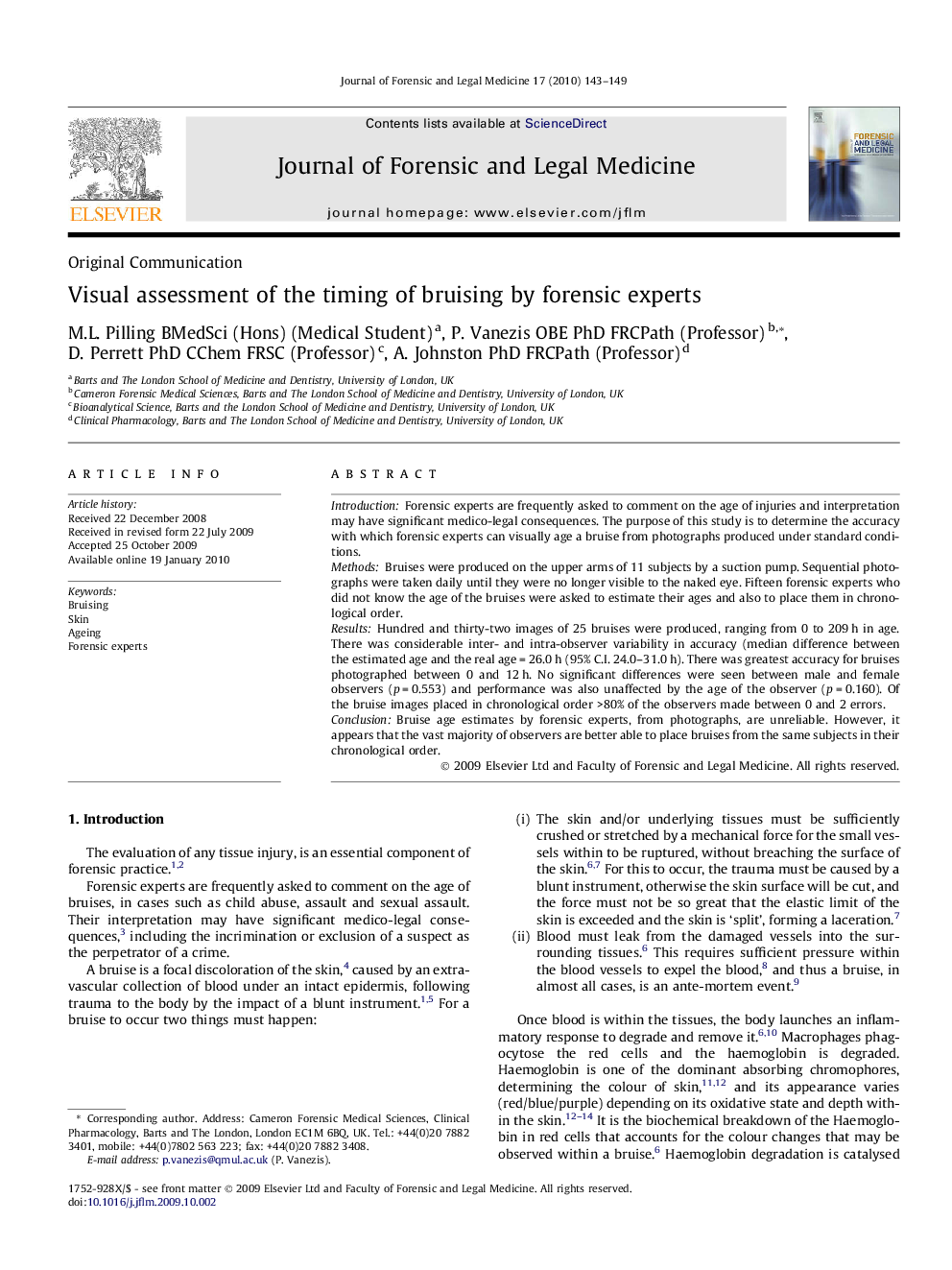| Article ID | Journal | Published Year | Pages | File Type |
|---|---|---|---|---|
| 102468 | Journal of Forensic and Legal Medicine | 2010 | 7 Pages |
IntroductionForensic experts are frequently asked to comment on the age of injuries and interpretation may have significant medico-legal consequences. The purpose of this study is to determine the accuracy with which forensic experts can visually age a bruise from photographs produced under standard conditions.MethodsBruises were produced on the upper arms of 11 subjects by a suction pump. Sequential photographs were taken daily until they were no longer visible to the naked eye. Fifteen forensic experts who did not know the age of the bruises were asked to estimate their ages and also to place them in chronological order.ResultsHundred and thirty-two images of 25 bruises were produced, ranging from 0 to 209 h in age. There was considerable inter- and intra-observer variability in accuracy (median difference between the estimated age and the real age = 26.0 h (95% C.I. 24.0–31.0 h). There was greatest accuracy for bruises photographed between 0 and 12 h. No significant differences were seen between male and female observers (p = 0.553) and performance was also unaffected by the age of the observer (p = 0.160). Of the bruise images placed in chronological order >80% of the observers made between 0 and 2 errors.ConclusionBruise age estimates by forensic experts, from photographs, are unreliable. However, it appears that the vast majority of observers are better able to place bruises from the same subjects in their chronological order.
